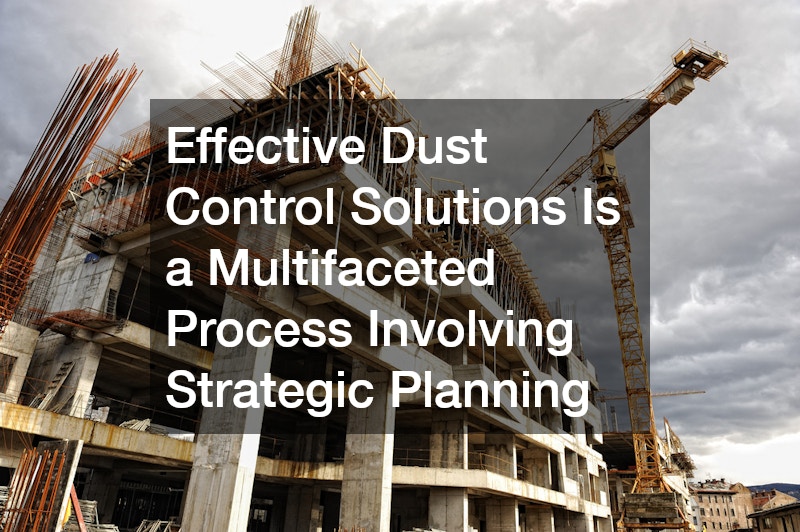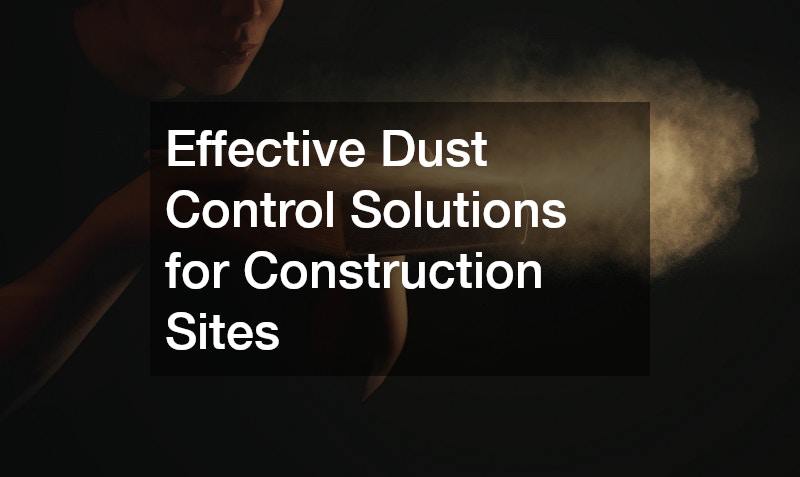Dust control is a critical aspect of managing construction sites, ensuring the safety of workers and the surrounding community. Effective control strategies not only improve air quality but also comply with regulatory standards to avoid potential fines and environmental impacts. In this article, we will explore various effective dust control solutions for construction sites, emphasizing best practices and innovative technologies.
By understanding the significance of dust control, construction managers and site operators can develop comprehensive plans to mitigate dust-related issues.
Applying appropriate control techniques requires a thorough understanding of site-specific variables, including project size, location, and materials used. By tailoring solutions to these factors, site teams can enhance efficiency and effectiveness. This article provides insights into practical applications of dust control solutions, supporting better planning and execution. As construction sites continue to evolve, adopting versatile control methods has become a priority for ensuring compliance and maintaining operational integrity.
Water-Based Dust Control Methods
Water-based solutions are among the most common dust methods used on construction sites. By wetting surfaces, water effectively reduces airborne dust particles, minimizing their spread. Regularly sprinkling water can prevent dust development during activities such as excavation and transportation of materials. However, water-based methods require careful management to prevent runoff and water waste, making an efficient system essential for ideal control.
Innovative technologies such as water trucks equipped with spray nozzles offer precise coverage, helping manage water usage while achieving effective dust suppression. These trucks can be programmed to cover specific areas at scheduled intervals, ensuring consistent application. Another approach involves installing fixed irrigation systems at key dust generation points, providing continuous moisture. Such systems are particularly beneficial in larger sites where manual application would be inefficient.
While water-based methods are effective, their success largely depends on weather conditions such as wind and temperature. During dry and windy days, more frequent applications may be necessary to suppress dust effectively. Additionally, consideration must be given to water availability and environmental impact, prompting the adoption of water-saving techniques where possible. As water remains a critical resource, balancing dust needs with sustainability goals is vital for construction site management.
Chemical Dust Suppressants
Chemical dust suppressants offer an alternative to traditional water-based methods by providing longer-lasting control. These chemicals, which include salts, polymers, and other compounds, work by binding dust particles together or stabilizing surfaces. By applying chemical suppressants, construction sites can achieve extended periods of dust suppression with fewer applications. This efficiency makes chemicals a cost-effective solution for long-term projects.
When selecting a chemical dust suppressant, considerations such as environmental compatibility and effectiveness under site-specific conditions are crucial. For example, products available in the control market often differ based on regional weather patterns and soil types. Understanding these variables helps in choosing the right suppressant for the desired outcome. It is essential to adhere to local regulations regarding chemical use to avoid potential environmental impacts.
Application techniques for chemical dust suppressants vary, including direct spraying or mixing into soil layers. Advanced application technologies, such as automated sprayers, create even distribution and coverage, enhancing efficiency. However, the use of chemicals requires periodic assessments to evaluate effectiveness and environmental safety. Regular reviews and adjustments that control strategies align with both site needs and regulatory requirements.
Barriers and Enclosures
Physical barriers and enclosures provide an effective method of controlling dust by containing it at the source. These structures, which can include fences, tarps, and temporary walls, significantly reduce dust dispersion by blocking wind and creating sheltered zones. Barriers are particularly useful in sites located near sensitive areas such as residential neighborhoods or natural habitats. By isolating specific construction activities, barriers complement other dust control measures for comprehensive management.
The effectiveness of barriers largely depends on their design and placement. Strategic positioning can maximize coverage and protection, taking into account prevailing wind directions and site topography. Selecting materials that are durable and resistant to weather elements is also important to maintain functionality over the duration of the project. In addition to traditional barriers, innovations such as dust screen technology can further enhance dust containment efforts.
Enclosures, like temporary structures or fabric curtains, are specifically beneficial in scenarios where high dust generation is anticipated, such as during demolition or concrete cutting. These enclosures trap dust and particles inside, preventing escape into the surrounding environment. While barriers and enclosures may require an upfront investment, their ability to significantly improve control outcomes justifies their implementation as part of an integrated approach.
Implementing effective dust control solutions is a multifaceted process involving strategic planning, technology adoption, and continuous evaluation. Exploring options such as water-based methods, chemical suppressants, and physical barriers allows construction sites to tailor their control strategies to site-specific needs. Each method comes with its own set of advantages and considerations, making it essential to understand the context and regulatory requirements involved. By integrating these solutions, construction sites can achieve improved safety, regulatory compliance, and reduced environmental impact.

